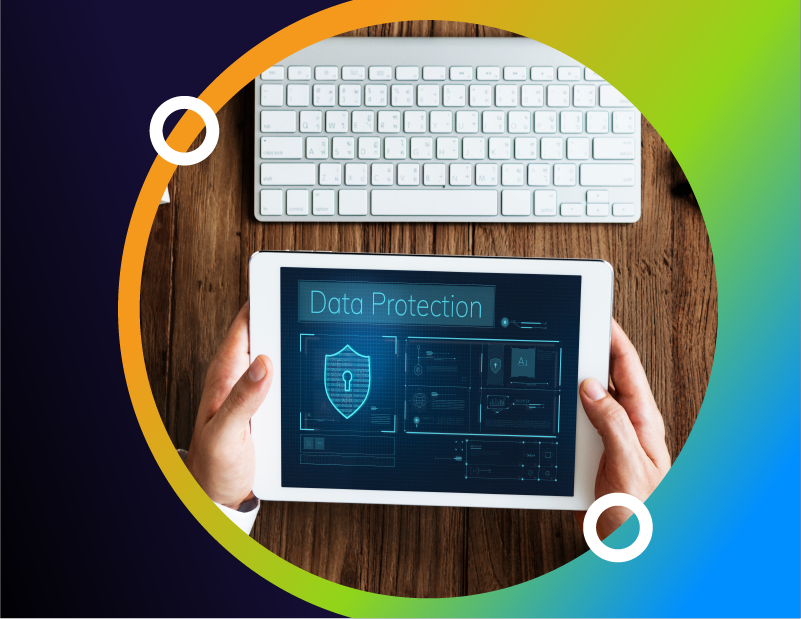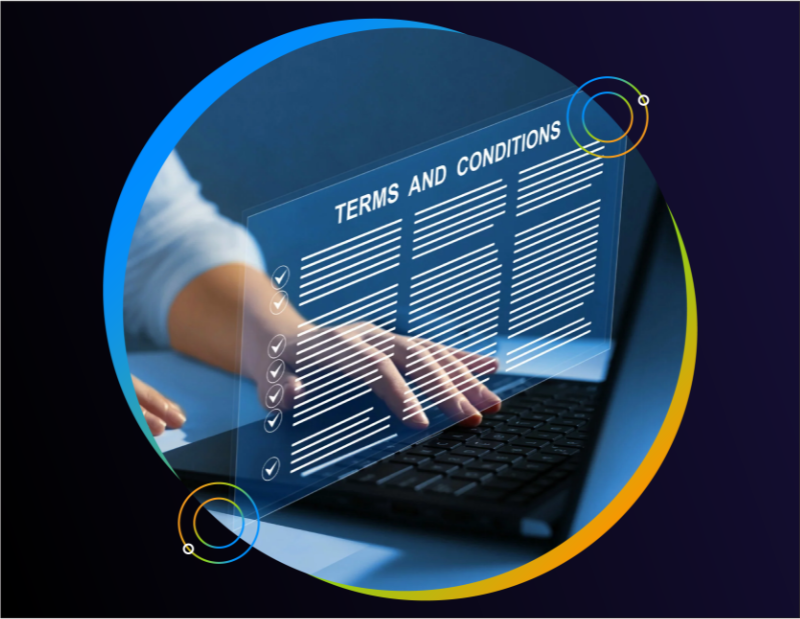The growing importance of digital demand generation channels in the B2B marketing mix was reflected by the results of DemandGen's 2018 Benchmark Survey Report. Out of the ten channels most effective in driving “early-stage engagement” and “driving conversions later in the funnel,” eight were digital.
These findings aren't astonishing to anyone engaged in B2B marketing. While analog channels, like in-person events, are still effective ways to drive demand, the shift to digital has been underway for more than a decade. As technology continues to be developed and embraced at increasing speeds, demand marketers are rushing to keep up.
With organizations facing more challenging success metrics, and demand marketers increasingly measured by their ability to drive contributions to total revenue, B2B marketers must not only demonstrate familiarity with digital channels, but they must also show expertise
Pro Tips for the Top 8 Digital Demand Generation Channels
New technologies bring new marketing channels with them – sometimes replacing older channels. Facebook Messenger, for example, is moving to become the new 1-800 number. Others assume Messenger will eventually replace email entirely.
This has caused many to proclaim that email is dead. A lot of new technologies, like Slack, have marketed themselves as a way to get out of email. So, it may be surprising that email marketing still reigns supreme in driving conversions and engagement at the top and bottom of the funnel. In fact, email is more effective than both websites and SEO, although websites get the most investment and SEO gets most of the news chatter.
While new technologies need to be embraced and mastered so that demand marketers can stay ahead of the curve, these eight digital channels are currently driving the most results.
#1. Email
Email marketing is nowhere near dead, and it's still the number one channel for B2B demand generation. According to the Benchmark Report, 59% said that email was most effective in driving early-stage engagement, while a whopping 81% said it was most effective in driving late-funnel conversions. These results mean that email is the most effective channel throughout the entirety of the funnel.
Pro Tip: Use Data Enrichment Emails
Data enrichment emails invite the lead to self-identify with a survey question in the email. Each answer click updates their contact record with the lead’s selection. Data enrichment lead nurturing emails are not only a way to engage the lead and update the contact record, but it’s also a way to ensure they’re being served with personalized content. It’s a win-win. The following are just a few examples of the types of data enrichment questions you can ask your leads:
- “What type of content do you want to receive?”
- “What’s your biggest challenge?
- What task are you trying to complete?
#2: Search
Google remains the king of the search engine hill, while YouTube has solidified its second place position. Search is most effective at the very top of the funnel, as prospects turn to search engines to solve problems, B2B organizations provide content to solve those problems. For the last decade, Search has been a leading way for brands to introduce themselves into the prospect's buyer journey. However, for the bottom of the funnel conversions, only 18% said that search was effective.
Pro Tip: Centralize Search Optimization Efforts
Jen McAdams, Vice President of Demand Generation and Field Marketing, believes that an all-in-one search optimization technology is a crucial component of effective B2B marketing. She writes,
“Search is still among the most vital pieces of a solid demand marketing strategy.”
Instead of one-off search tools, McAdams’ team uses Moz as a “go-to resource for all things SEO.”
Pro Tip: Create a Long-Term Commitment to SEO
Jessica Levenson, VP Search & Engagement, writes in DemandGen Report,
“SEO programs are a long-term commitment. If you need leads in a hurry, you may want to look at other options, like...pay-per-click (PPC) advertising.”
Levenson advises CMOs to consider SEO as part of a long-term strategy, and to be prepared to “bump and weave” along with changes in search marketing best practices as Google’s search algorithm continues to evolve. Other expert recommendations issued by Levenson include:
- Focus on tracking SEO metrics that matter
- Forget about SEO shortcuts–they no longer exist
- Write clearly, and use keywords and phrases your buyer personas use
#3: Website
Great web experiences are key, not only for lead generation at the top of the funnel, but for driving sales at the bottom of the funnel as well. The results from the Benchmark Report were nearly even, with 51% saying the website was most effective for early-stage engagement, to 50% saying it was most effective for driving late-stage conversions. Although native content on external channels is rising, the website remains the hub of all digital marketing efforts.
Pro Tip: Personalize and Test Your Message
Jen McAdams, Vice President of Demand Generation and Field Marketing, believes many B2B marketers can benefit from an enhanced ability to create a personalized, measurable website experience with A/B testing and one-to-one content delivery. She writes,
"While marketing automation platforms do include these features to some degree, there are a variety of options to increase your ability to personalize and test different messaging and designs."
Technology options cited by McAdams which may enhance the website’s ability to serve as demand generation engine include Unbounce, Optimizely, and Typeform.
Pro Tip: Maintain Control of Web Tech & Design
Scott Fingerhut, VP of World-Wide Marketing & Demand Generation at Elastic, believes you should,
“fight as hard as you can to own a prominent piece of your company’s website for demand purposes.”
While many B2B marketers maintain CMS access, they should retain a place in conversations around website technology, integrations and design. The marketing team needs the voice and the freedom to experiment and optimize as needed – including with personalized content delivery, A/B testing, new content strategies and other demand generation tactics.
#4: Social
When social first emerged as a viable B2B marketing channel, it was primarily used as an on-ramp to the website. Most social posts were short value props with attached links. Twitter may be the only social channel that still maintains this type of experience, although they have experimented with native content with apps like Vine and Periscope. Most other channels, though, are pushing a native experience, promoting content that keeps users on their platform.
Social should no longer be considered an on-ramp to another platform. Brands must engage their audience on the platform in a meaningful way. This truth is apparent in the disparity between early-stage (44%) and late-stage (17%) effectiveness of Social in the Benchmark Report.
Pro Tip: Avoid Formulas
Sapir Segal, Director of Marketing at Oktopost, advises B2B brands striving for authenticity to avoid the use of pre-formulated responses on social media. She writes,
“formulaic conversations and responses might hurry the process, but in return, they will damage your authenticity.”
Pro Tip: Be Authentic
Dr. Alice Boyd writes,
“No one likes people who are consistently whiny and complaining on social media, but try to present the good and bad aspects of your experiences in a balanced way, that’s an accurate reflection of reality.”
The behind-the-scenes look of your B2B reality doesn’t need to be a less-than-glamorous look, but it also doesn’t need to be a photoshopped glimpse of your workforce that looks a little bit too much like a stock photo, either.
#5: Online Ads
Yes, pay-per-click and social ads are less effective and more expensive today than they were yesterday. However, they are still beneficial. Best-selling author Gary Vaynerchuk says that online ads are grossly underpriced. While they were cheaper and more effective last year, they are still a very inexpensive way to drive demand and earn attention.
According to the Benchmark survey, 27% said that online ads were most effective at early-stage engagement, compared to only 6% for late-stage conversions. This means that for a B2B organization that needs to fill the top of their funnel, online ads are a viable way to accomplish that goal.
Create a Solid Baseline to Optimize at Scale
Eddie Morales, Director of Demand Generation, relies on a third-party Google Adwords agency which he describes as “top notch” to navigate the “idiosyncrasies” of online advertising and pay-per-click (PPC) platforms. He writes,
"this is still a very highly valuable marketing channel despite the power that Facebook and mobile is wielding these days."
According to Morales, the best approach to online advertising success consists of the following components:
- Domain Knowledge
- Solid Campaign Strategy
- A Scalable Approach
When combined with platform-specific knowledge, Morales’ organization has succeeded at achieving all the components “crucial to building a strategy and optimizing at scale.”
#6: Retargeting
Retargeting, while a type of online advertising, earned its spot as a standalone channel. It works differently than top-of-funnel advertising in that it builds the relationship while pushing conversions. And, it performs strikingly well.
According to the Benchmark Report, 19% said it was most effective at early-stage engagement. However, near the end of the buyer journey, retargeting becomes just as effective at driving late stage conversions (27%) as early-stage online ads are at driving top-of-funnel engagement.
Pro Tip: Use Retargeting to Nurture, Upsell and Build Relationships
Siobhan McGinty, International Champion, Customer Marketing, highlights the potential of retargeting as more than just an opportunity for capturing the interest of lost leads and re-engaging website visitors.
With the right retargeting strategy, B2B marketing organizations can ensure that every touchpoint during retargeting campaigns aligns the right person with the right content at the right time. She writes,
Retargeting helps you stay connected and engaged with your audience, and increase brand recall and conversions–feeding all stages of your marketing funnel.
Several of the McGinty’s best recommendations for B2B demand gen retargeting include:
- Push people through the funnel – similar to email nurturing
- Use retargeting to promote events
- Exclude visitors who spend less than 10 seconds on your website
- Feature well-recognized thought leaders and faces from your company in ads
- Use retargeting to encourage customer loyalty offers and programs
- Cross-sell and upsell with retargeting
- Connect with missed calls and unopened emails via retargeting
#7: Content Syndication
If you're relying on organic traffic to generate top-funnel demand, you'll likely hit a plateau. As David Crane wrote,
"There’s a point in inbound marketing in which you start squeezing everything out of it that you can just to drive a bit more traffic or acquire a few more prospects. ...At this point, it’s often the right move for marketing orgs to divert resources to 3rd-party demand gen marketing methods; and by that I mean methods that leverage the same persona-based, educational content concepts employed in inbound, but delivered via 3rd-party channels, especially through the use of media partners that have niche, highly engaged audiences that you wouldn’t otherwise be able to attract."
According to the Benchmark report, only 17% consider content syndication (which is one type of 3rd-party demand gen) as most effective in early stage engagement and a lowly 11% for late-stage conversions. This reveals, to me, a couple of things. First, content syndication is better for top-of-funnel engagement, introducing your brand to a new audience.
Moreover, the fact that only 17% consider it most effective reveals that there is a lot of B2B marketers that aren't using it to its potential. This is a common problem among demand gen teams because managing multiple media partners and processing all the resulting leads largely remains very manual, draining time and resources, and also difficult to optimize without the right strategy and tools. Done right, however, content syndication and 3rd-party demand gen offers a big opportunity for your brand to fill the top of the funnel through strategic content-sharing partnerships. (See how brands like Commvault, Iron Mountain and Avalara have used 3rd-party demand gen with great success.)
Pro Tip: Streamline Cross-Platform Syndication Programs
Stephanie McArthur, Senior Campaign Manager, has adopted Integrate to streamline her organization’s content syndication programs. She writes this technology has driven significant change in visibility, stating,
“We’re able to keep media partners accountable to our needs, control data quality and integrity, and have complete visibility into which leads are truly performing the best. It has allowed us to make real decisions and given us so much buying power.”
Much like other demand generation organizations, McArthur’s team believed that “quality always trumps quantity.” With the ability to centralize insight across content syndication partnerships, they can rely on real-time data for in-flight optimization.
#8: Predictive Analytics
While predictive analytics accomplished virtually nothing in the early stages of the funnel, 11% said it was most effective in assisting late-stage conversions. Predictive analytics is valuable, even to account-based marketing initiatives, using data to identify companies that will most likely buy from you.
Pro Tip: Analytics & Attribution
Dave Rigotti, VP of Marketing at Bizible explains,
“I’m a firm believer in the 80/20 rule. [I use] attribution to find the 'Moneyball' marketing channels and initiatives that others have ignored but drive” revenue.
With tools for measurement, analytics and attribution, it’s possible to understand the channels and initiatives that are underperforming and driving results in real-time–not after a campaign has come to a close. This provides B2B marketing organizations with the opportunity to adjust performance and budgets in real time to maximize budgets and performance to optimize the pipeline and performance and achieve steep targets.
Digital Demand Generation: Always Shifting
It's easy to get caught up in the latest digital marketing fad. Some experts were all-in on Snapchat until Instagram added competitive features, and the Snapchat bandwagon cooled down. Every week, it seems, there's a new way to drive "amazing results." If you're a marketer, scroll down your news feed on Facebook, and you'll see multiple ads of people offering a "new and improved" strategy that will "change the game."
For example, we talked about Messenger looking to replace email. HubSpot, recently published a post exploring if Facebook Messenger, with artificial intelligence chatbots, was a more effective channel than email. In their tests, Facebook Messenger experienced an 80% open rate compared to only 33% for email. The click-through rate win also went to Messenger, with 13% clicks compared to just over 2% for email – a whopping 619% advantage.
Yet, email is still the most effective channel for B2B marketers. For sustainable success, marketers must not be bashful on trying new channels and tactics to increase results and efficiencies. However, at the end of the day, doubling down and mastering the channels that are driving the most results right now is the shortest path to a higher ROI.




